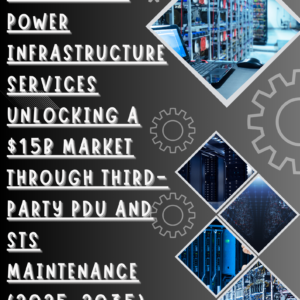1. Executive Summary
-
- Overview of custom AI server building process
- Key trends and dynamics in hyperscaler partnerships
- Future developments and projections for AI servers in hyperscaler environments
2. Introduction to Custom AI Server Building for Hyperscalers
-
- Definition and role of custom AI servers in cloud infrastructure
- Overview of hyperscalers’ AI needs and requirements
- Key players in the AI server space and their partnerships with hyperscalers
3. Collaborative Process with Hyperscalers for AI Server Development
-
- Engagement process: from RFP to final product
- Joint design and development: integrating customer-specific needs
- Customization levels and collaboration models with hyperscalers
- Case study of a custom AI server project for a major hyperscaler
4. Technical Comparison: Custom AI Servers vs. NVIDIA Solutions
-
- Overview of NVIDIA’s AI server solutions (DGX systems, GPUs, etc.)
- Key differences in architecture, performance, and scalability
- Technical specs comparison (compute power, memory, networking, etc.)
- Pros and cons of custom-built AI servers vs. off-the-shelf NVIDIA solutions
- Market positioning: When do hyperscalers prefer custom solutions over NVDA?
5. Bill of Materials (BoM) for Custom AI Servers
-
- Breakdown of key components (CPUs, GPUs, networking, storage, etc.)
- Overview of supply chain management for AI server components
- Cost considerations and major suppliers involved
- Impact of chip shortages and global supply chain issues on AI server production
- BoM optimization strategies for cost and performance
6. AI Server Evolution: How Hyperscaler Servers May Change Over Time
-
- Emerging trends in AI hardware (AI accelerators, custom chips, liquid cooling, etc.)
- The shift toward modular, scalable AI server designs
- AI workloads driving changes in AI server architecture (LLMs, reinforcement learning, etc.)
- Impact of new AI technologies on server configurations (quantum computing, neuromorphic chips)
- Predictions for the next generation of AI servers (performance, power consumption, etc.)
7. Hyperscaler Demand and Future Outlook for AI Servers
-
- Market demand for AI infrastructure and the role of hyperscalers
- Geographic distribution and cloud expansion influencing AI server deployment
- Future AI server requirements driven by 5G, IoT, and edge computing
- Sustainability and energy efficiency considerations for future AI servers
- Long-term strategies for companies building AI servers for hyperscalers
8. Competitive Landscape for AI Server Manufacturers
-
- Key players in the custom AI server market
- Competitive positioning relative to NVIDIA, AMD, and other GPU/AI server manufacturers
- Strategic partnerships between AI server builders and hyperscalers
- Barriers to entry and growth opportunities for new market entrants
9. Challenges and Risks in Building Custom AI Servers
-
- Technical challenges: scalability, heat dissipation, and power consumption
- Supply chain risks and component availability
- Balancing performance with cost-efficiency for hyperscaler customers
- Risk of obsolescence in AI hardware and fast-evolving AI workloads
10. Conclusion: Key Takeaways and Future Directions
-
- Summary of the process and opportunities for building custom AI servers
- Key factors driving the future evolution of AI server design
- Recommendations for companies looking to enter or expand in the custom AI server market
11. Appendices
-
- Glossary of technical terms and server components
- Detailed comparison charts of NVIDIA vs. custom AI server configurations
- Additional case studies on successful AI server deployments for hyperscalers
#AI #Hyperscalers #CustomAIServers #CloudInfrastructure #ServerDevelopment #NVIDIA #AIHardware #BillOfMaterials #AIWorkloads #QuantumComputing #NeuromorphicChips #SupplyChain #Sustainability #EnergyEfficiency #GPUs #ServerArchitecture #TechTrends





